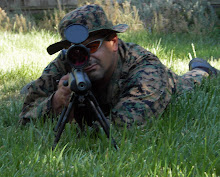In the previous post Part 1: Viewing the Sun Safely I offered information about viewing safely as well as inexpensively. This post will be nothing like the first, except a continued focus on safety. :-)
Here is where it gets more interesting, that is... if you have a telescope:
- Baader solar filters, these are somewhat inexpensive (as solar filters go) and fit over the front of your telescope objective lens. They offer views of white light, which is nice to view sunspots as well as an eclipse. Images captured of the Sun in white light look like the photo below (but this photo is extra cool, as they also captured an airplane transiting the Sun!)
| Sun via a 'white light' filter |
- In this same realm there are also glass solar filters, which fit over the front of your telescopes objective lens and offer similar views as found in the white light solar filters. Some of the glass filters have a tint to them that makes the Sun look orange-ish instead of purely white (or light blue).
Filters of these types normally run anywhere from $80.00 - $200.00.
Generally these filters are very safe as long as you follow these rules:
- check the filters before you put them on the telescope, by looking at the Sun with the filter, if you notice any spots of bright light (eg: a pinhole), take the following action, depending on your filter type:
- If mylar, take a piece of small black electricians tape to cover the pinhole
- If glass, take a black 'sharpie' and fill in the part that is scratched or otherwise damaged
There are telescopes that are dedicated to viewing only the Sun, these scopes come in two major varieties:
- Hydrogen Alpha - tuned to the wavelength of 656.281 nanometers, this telescope is great for capturing surface features as well as prominence.
- Calcium Potassium - tuned to capture waves at 393.4 nanometers, this type of filter is really good for capturing magnetic phenomenon.
Both of these types of specialized telescopes come in various sizes and thereby prices. The Hydrogen Alpha (HA) scopes are easier to come by as they are the most popular.
 |
| Solar Prominence |
There are many vendors for these types of telescopes, the most prominent vendors are Meade (Coronado) and Lunt Systems. Both of these vendors make fine solar scopes, so you will not do bad with either.
In part 3, I will offer my observations on Solar Telescopes and photography.
Clear Skies!

No comments:
Post a Comment